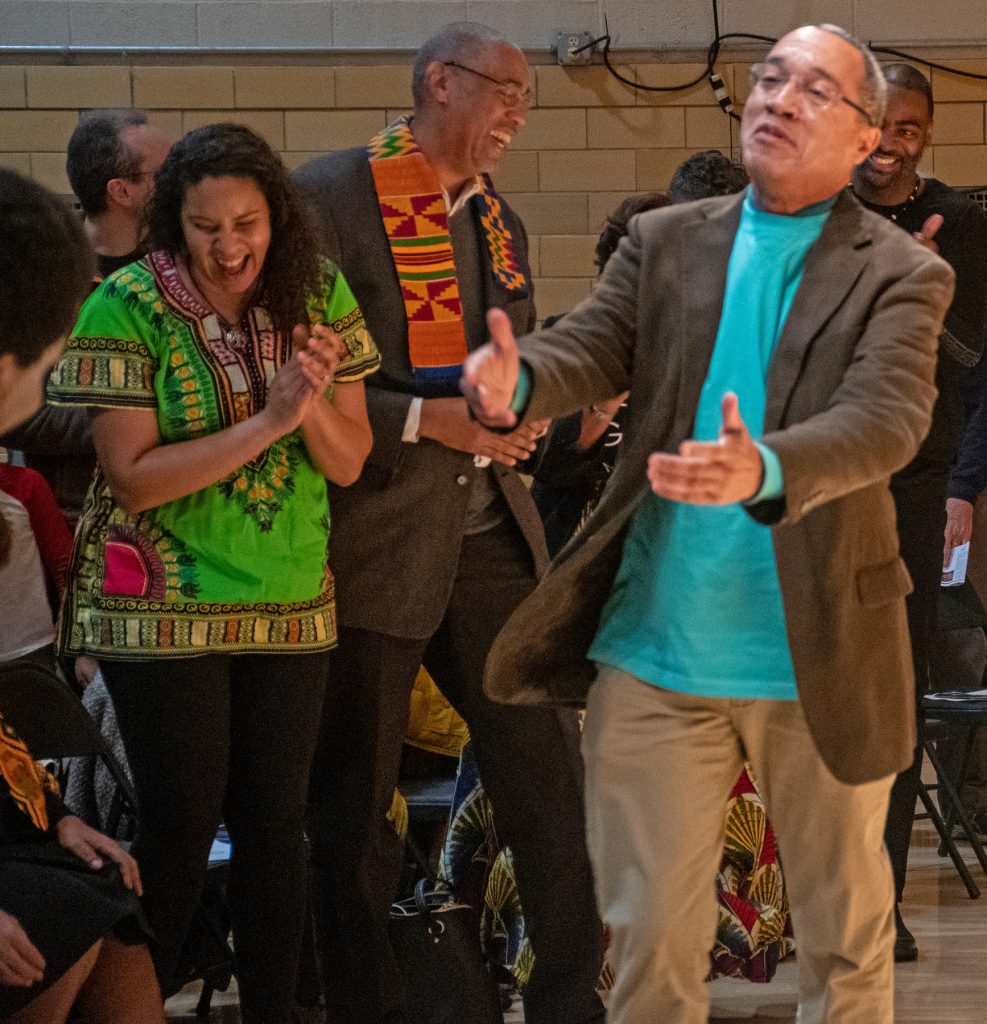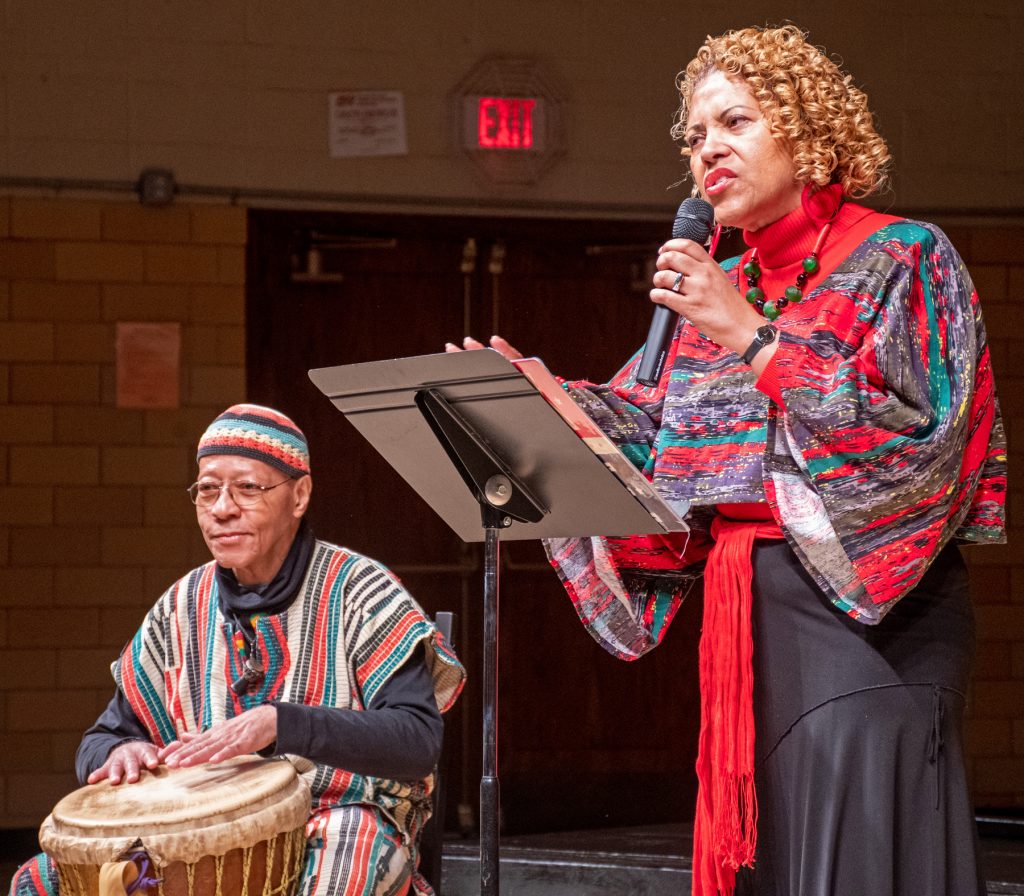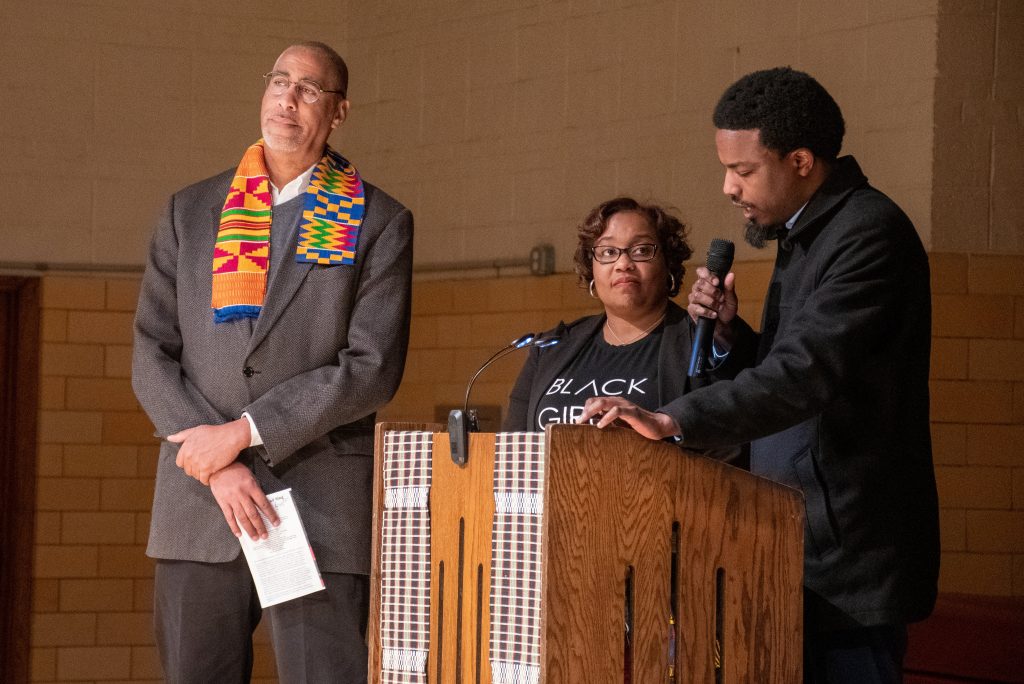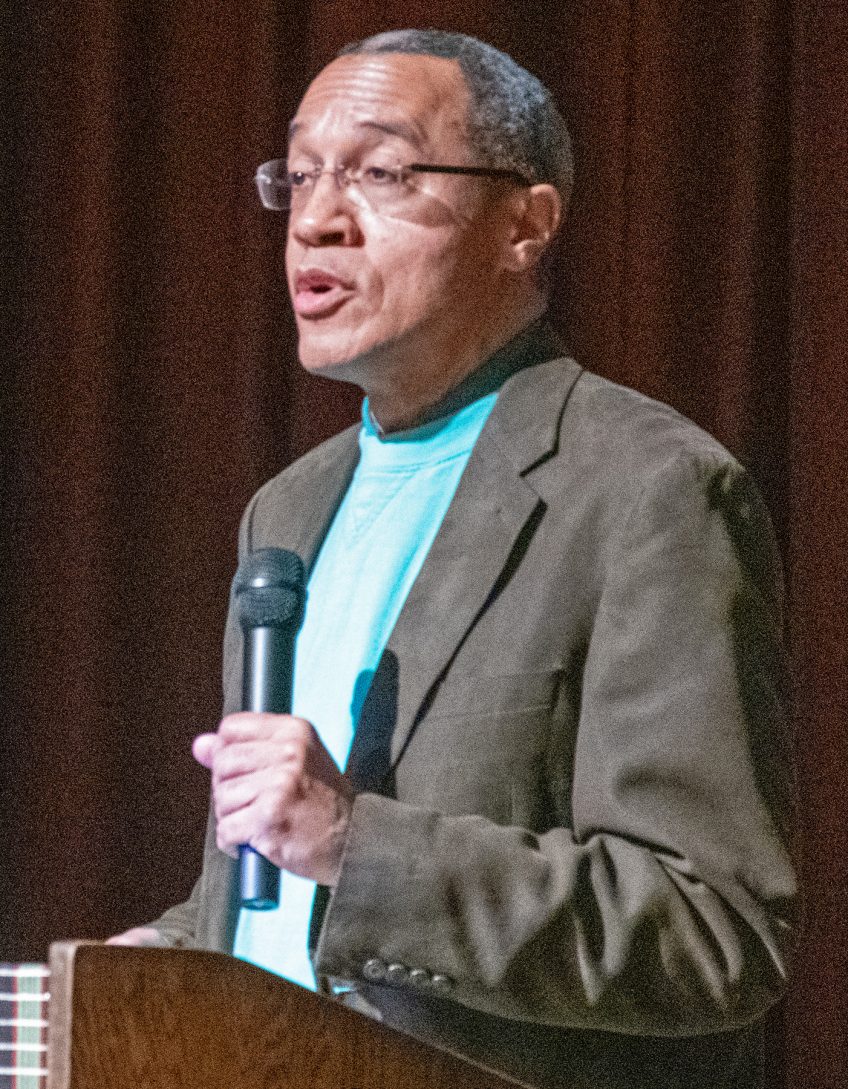Chris Haley, the director of the Maryland State Archive’s Study of the Legacy of Slavery in Maryland project, brought a historical note to Sunday’s Greenbelt Black History Month program, centering his keynote presentation on what life was like for African Americans across Prince George’s County and Maryland prior to the state’s abolition of slavery in 1864.
Haley, speaking before dozens of community members in the Community Center gymnasium, introduced the legacy of slavery in Maryland by discussing famed African American abolitionists Frederick Douglass and Harriet Tubman.
“Two of the most iconic persons in all of African American history are native-born to Maryland, in neighboring counties in our Eastern Shore,” Haley said. “I did not know that until I came to the [Maryland State] Archives.”
However, Haley made it clear that the legacy of slavery in Maryland extended far beyond these household names. Maryland, he said, financially thrived on the institution of slavery. In 1860, there were nearly 90,000 enslaved people living in the state, with a market value giving their owners the purchasing power of more than $2 billion today.
“How easy would it have been to let that go?” Haley asked rhetorically.
Since being established in 2001, the Study of the Legacy of Slavery in Maryland, in Haley’s words, “has unearthed identifiable information on over 400,000 individuals,” in part by mining newspapers for listings that advertised rewards for the return of escaped slaves or announced the capture of individuals who were suspected of being fugitive slaves.
Going over a selection of these runaway ads and committal notices, Haley used stories of escaped slaves with blue eyes and white wives to illustrate the eclectic history of slavery in Maryland.
“Some of these things I never knew [before coming to the Maryland State Archives], and even today, they shock and surprise me,” Haley said.
Slavery in Maryland was abolished by the Maryland Constitution of 1864, at a time when Prince George’s County, according to Haley, “had the most enslaved population in all of the state by a 10-to-1 ratio.”
“Now, today, according to an article in The Washington Post in 2015, Prince George’s County is one of the richest majority African American counties in the U.S.,” Haley said.
Haley ended with a quote from a poem Prince George’s County Poet Laureate Joy Matthews Alford read earlier in the program: “We’re not going back to yesterday.”
Mayor Colin Byrd spoke highly of Haley’s presentation. “I thought that Mr. Haley’s remarks were extremely informative, and they helped us understand not only more about two of Maryland’s native children, Harriet Tubman and Frederick Douglass, but also about the legacy of slavery here in Maryland, not only on a macro level, but through personal individualized stories that really help illustrate what it was all about on the ground level,” Byrd said.
The program also included performances focused less on educating audience members with historical facts and more on evoking their emotions with cultural demonstrations. Performers included youth band Kids in the Dream, Poet Laureate Alford, Belly Dancers of Color Collective, internationally recognized jump rope team Greenbelt S.I.T.Y. Stars and Eleanor Roosevelt High School’s gospel choir.
Kate Frederick, a retiree from College Park, described the overall program as “fabulous.”
“It was a terrific event,” Frederick said. “The entertainment and historical aspects regarding slavery were well interspersed into the program.”
Greenbelter Karen Beckham echoed these sentiments. “I enjoyed the program immensely,” said Beckham, a federal employee. “I thought it was a great historical lesson – not only for the young, but for the old, as well. And it was a wonderful opportunity to bring the community together for us to learn and to grow, and to not only learn about black history, but American history, because it’s all of our history.”




